Have you ever found yourself craving homemade pizza, but the hassle of making it is stopping you? What if you could have dough ready to whip up the perfect homemade pizza whenever you want?
Freezing pizza dough is an excellent way to preserve it. You can make large batches, store leftovers, and always have homemade pizza dough ready without all the work and hassle. In this article, I will show you how to freeze pizza dough the right way so you can have delicious homemade pizza whenever you want!
Why freeze pizza dough?
It’s time-consuming to make homemade pizza dough from scratch. Especially if you make Neapolitan-style or cold-fermented dough that takes anywhere from 8 hours to several days. It also requires work, cleaning, and planning. But freezing pizza dough will make your life easier.
Reasons to freeze pizza dough:
- It’s the best way to store pizza dough
- The dough lasts long
- You can make large batches of pizza dough to save time and work
- It makes planning and timing easier
- You will always have amazing homemade pizza dough
Freezing pizza dough is the best way to store it over longer periods of time. Pizza dough contains yeast, which is a living organism that makes your dough rise. But if you leave your pizza dough for too long it will overproof, meaning the air bubbles will pop and your dough will collapse. This makes timing critical. You don’t want your pizza dough to be under-proof, or over-proofed.
When you freeze the dough, it will make the yeast inactive and stop the proofing process. This means you can let your dough proof perfectly, then freeze the dough and pull it out whenever you need it. And after defrosting, it’s just as good as before freezing.
Timing is also a challenge. Many pizza dough recipes require 4, 8, or 12 hours of fermentation. And this makes it hard to make it at the perfect time with a busy schedule. But by freezing the dough, you can simply make it in advance, and leave it in the freezer for as long as 3-6 months.
You can also make larger batches of pizza dough. Doubling your pizza dough doesn’t require more work. So you can have double the pizza with the same amount of work and cleaning. Whenever you want pizza, simply pull it out and let the dough defrost. No work, no mess, just delicious homemade pizza!
And if you accidentally have any leftover dough after baking a few pies, you can just throw them in the freezer for next time.
You don’t need to do anything special to your dough to freeze it. You can freeze any pizza dough!
What you need to freeze pizza dough
To freeze pizza dough you need 3 things:
- Pizza dough
- Oil
- Something to store the dough in
Pizza dough
The first thing you need is obviously pizza dough. You can freeze your favorite dough or try one of my recipes: Cold fermented pizza dough.
Make your pizza dough as usual, let it rise, and divide it into dough balls. But right before it’s done fermenting, place the dough in the freezer. That way it’s ready to be stretched, topped, and bake as soon as it comes back to temperature.
Oil
You will also need oil to make sure your dough doesn’t stick. I personally prefer olive oil, but you can use any oil you like.
Storage
When you freeze pizza dough you need to wrap or cover it to prevent freezer burns. Freezer burns happen when frozen food is exposed to dehydration and oxidation. And the result is dry spots on the dough, that are going to make a hard, dry pizza crust. To protect the dough balls during freezing you will need plastic wrap, zip-lock bags, or air-tight glass or plastic containers.
I find a Tupperware or pizza dough container to be the best option. They are easy to use, will keep the shape of your dough ball during both rising and freezing and it’s easy to get the dough balls out.
A high-quality glass container perfect for storing pizza dough in the fridge or freezer, that stacks for convenient and compact storage.
An air-tight container is also great for cold-fermentation and other types of fermentation of pizza dough balls.
How to freeze pizza dough in containers
1. Make pizza dough balls for freezing
Make your pizza dough and let it rise and ferment. Then split the dough into individual pizza dough balls that fit your containers.
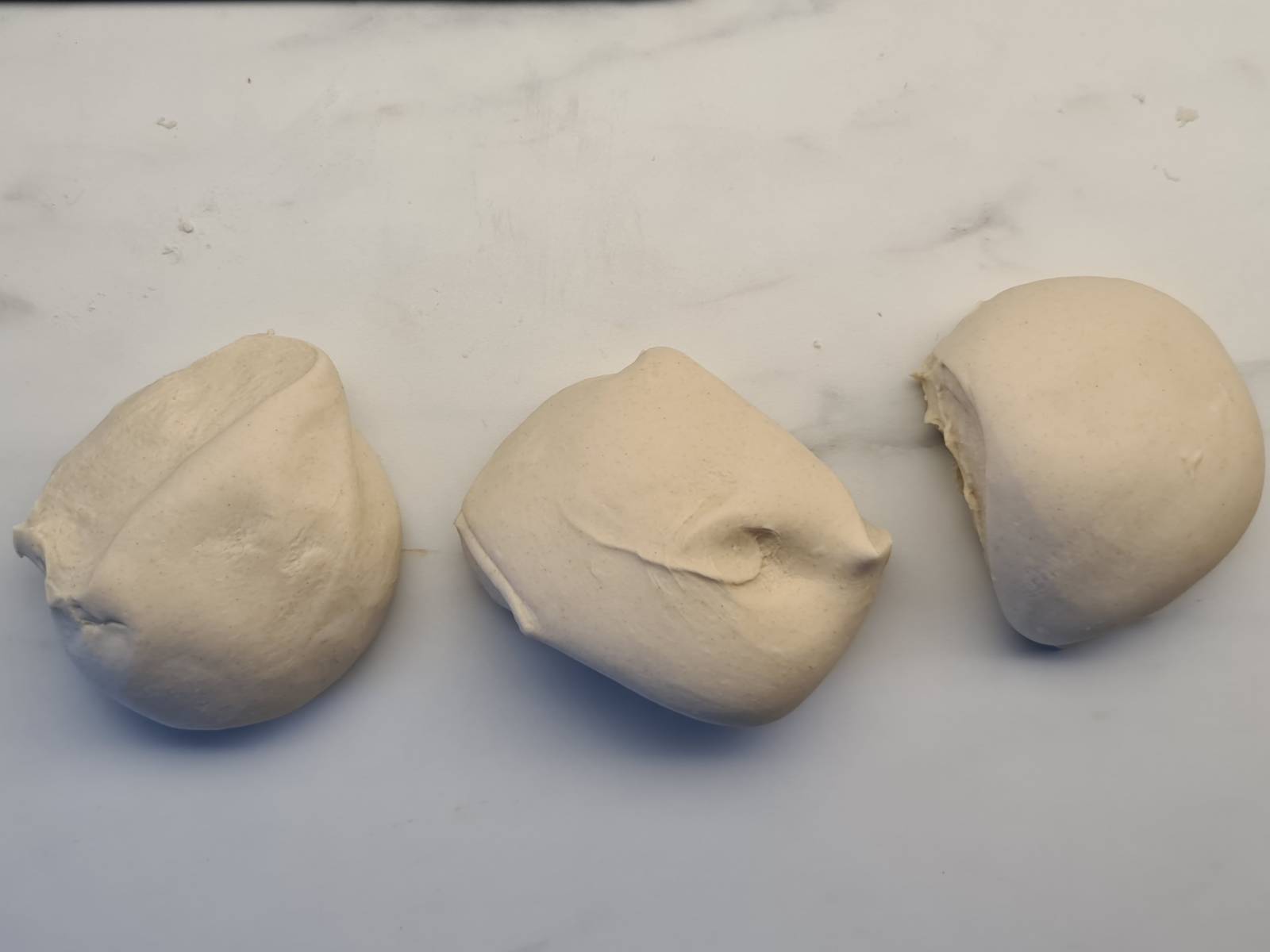
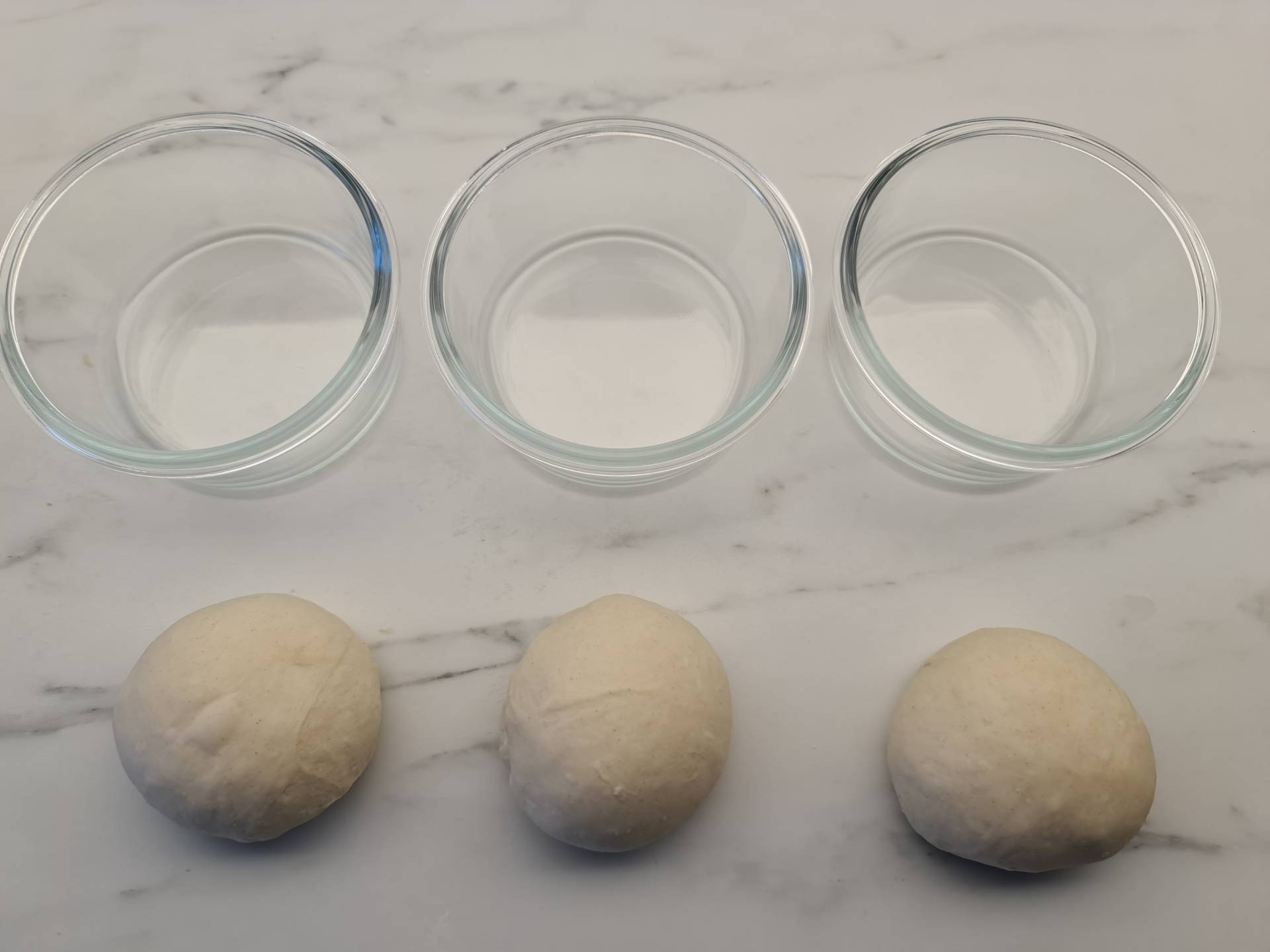
2. Place the dough balls in the containers
Oil the dough balls and containers to prevent the dough from sticking. Then place each dough ball in its container and close on the lids to prevent the surface of your dough from drying out.
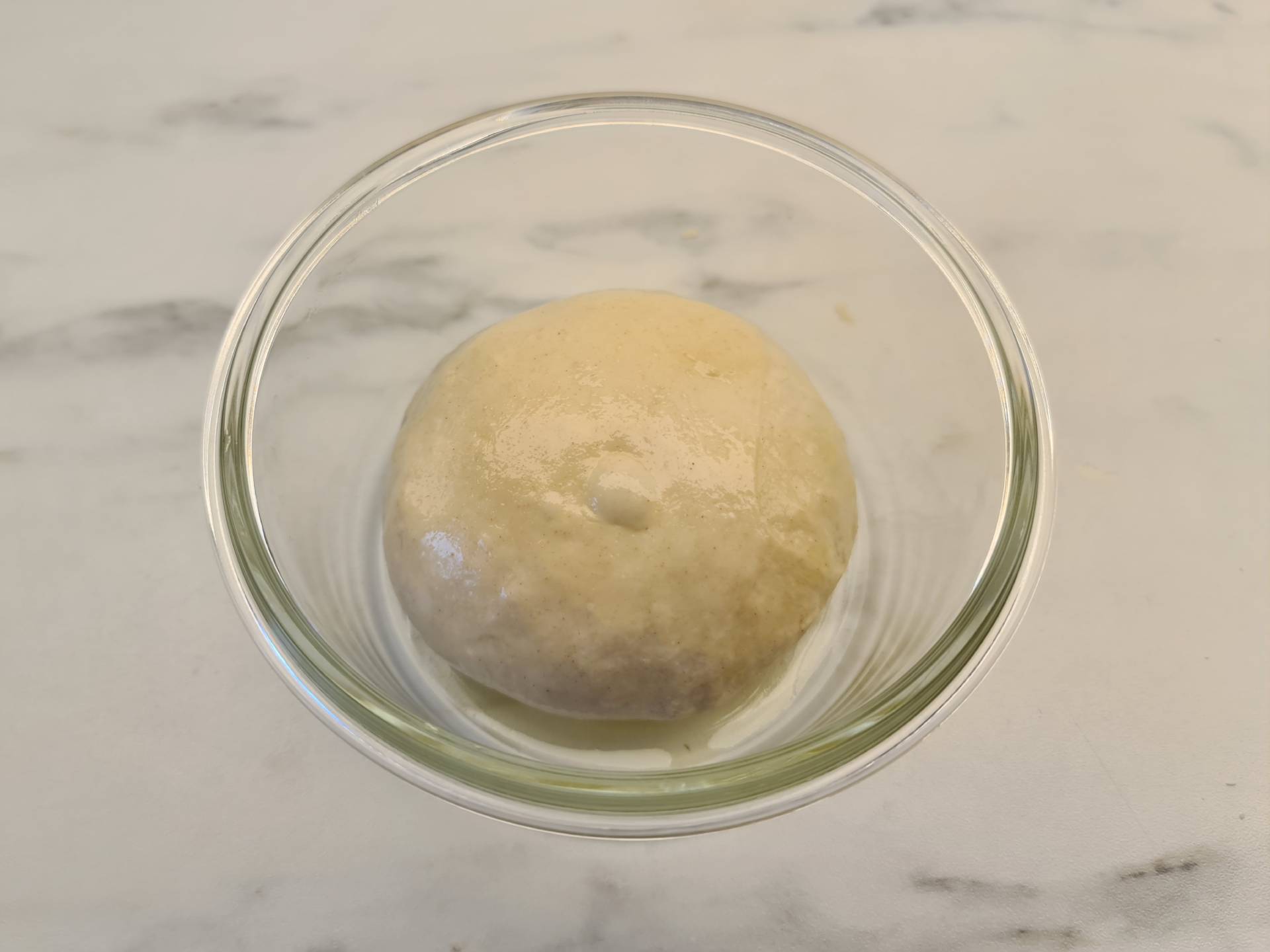
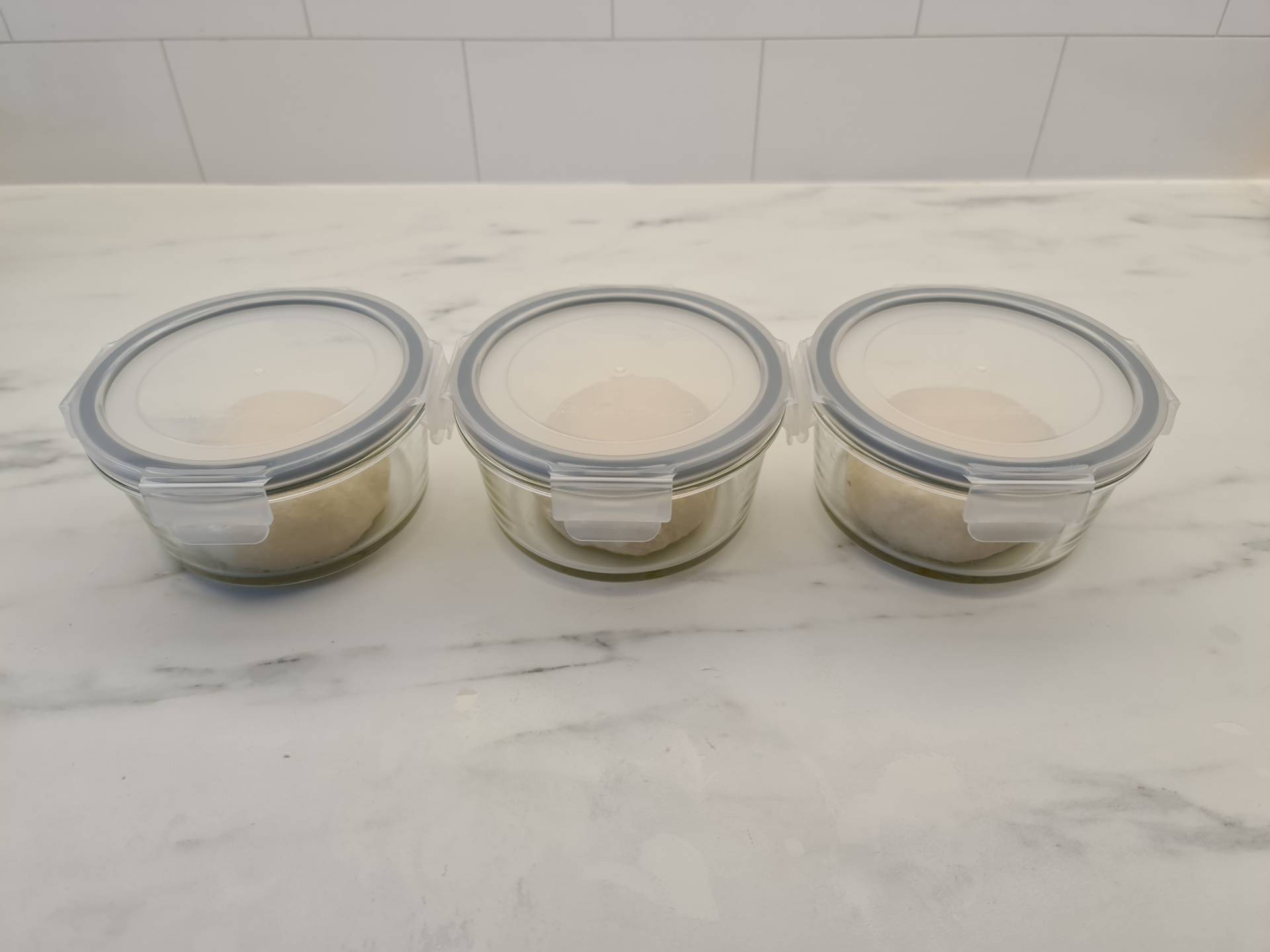
3. Fermat the dough balls
Let your pizza dough balls rise in the containers according to your recipe. Typically until they are almost double in size.
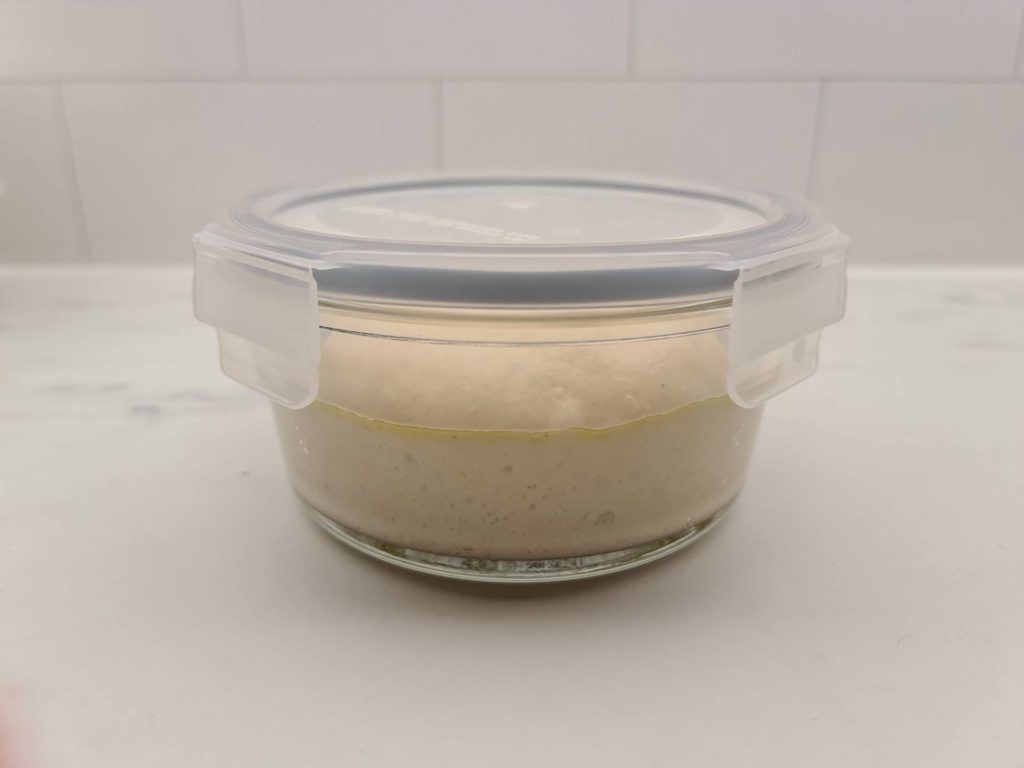
4. Freeze the dough
When your dough balls are fully fermented and ready to use, place the containers in the freezer. You can keep them there for up to 3-6 months.
How to defrost frozen pizza dough
When you’re ready to make homemade pizza, it’s time to thaw or defrost your pizza dough balls.
There are 4 ways to defrost pizza dough:
- In the fridge
- At room temperature
- Using a water bath to speed up defrosting
- (In the microwave)
Thaw frozen pizza dough in the fridge
Take your dough out from the freezer and put it in your fridge to thaw overnight. Then place it at room temperature for around 1 hour before baking to make it easier to stretch and shape your pizza.
If you’re using a dough container, simply place the whole container in the fridge. If you’re using frozen pizza dough wrapped in plastic wrap or in a ziplock bag, remove the dough and place it in a bowl covered in plastic wrap to thaw. When the dough comes back, it’s going to be soft and much harder to remove from the plastic.
This is the most gentle way of defrosting pizza dough, but it will take up to 24 hours for the dough to fully thaw in the fridge. When the dough thaws the yeast will come to live again and continue the fermentation process. But at the low temperature in the fridge, it shouldn’t rise much more.
Thaw frozen pizza dough on the countertop
Take out your dough from the freezer and leave it on your countertop at room temperature for 3-4 hours to thaw and come to temperature.
If you’re using frozen pizza dough wrapped in plastic wrap or in a ziplock bag, remove the dough and place it in a covered bowl to thaw.
Defrost frozen pizza dough using a water bath to speed it up
When you’re in a hurry, you can speed up the defrosting process using a water bath. This method is most suited for frozen dough balls stored in ziplock bags because you need to put your dough in a water-proof plastic bag.
Fill a large bowl with cool to room temperature water and carefully submerge the plastic bag in the water while letting air out. Air in the plastic bag will slow down the process. Leave the dough to defrost for 1-2 hours in the water bat.
You can also use warm water to speed up the process even more. But be careful, too hot water can kill the yeast!
Defrost frozen pizza dough in the microwave (only emergencies!)
You can also defrost your pizza dough in the microwave. But I don’t recommend doing so unless it’s an emergency because it’s easy to overheat the dough and kill the yeast.
Microwave the dough at a defrosting setting or the lowest setting. And keep a close eye on the dough to make sure it doesn’t overheat.
How to use frozen pizza dough
1. Take the dough balls out to thaw
Take your dough out of the freezer and defrost it using one of the methods from the previous section.
2. Take out dough balls
Take the dough ball out from the rising container, ziplock bag, or plastic wrap.
3. Stretch and top your pizza
Finally, stretch, shape, and top your pizza like you always do.
Related
- Is Your Pizza Dough Too Dry? Here is How to fix it! - June 10, 2024
- The Ultimate Guide to the Pizza Dough Windowpane Test - June 8, 2024
- The Ultimate Guide to Autolyse Pizza Dough - June 7, 2024

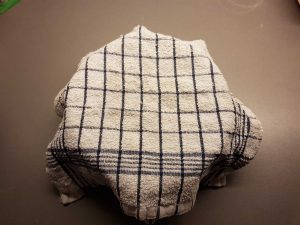
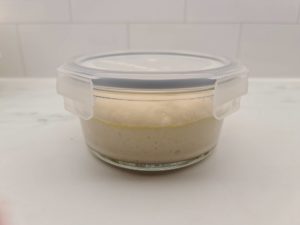
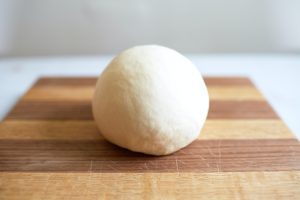
Hi
Should you let the balls rise before freezing or freeze them right after shaping and letting them rise before baking? I had fair results with letting them rise before baking. Keep up the good work.
I usually freeze leftover dough, so after rising. If I plan to make extra dough to freeze them, I let them rise to they are almost ready (around 80%) before freezing.